"Our tips make people feel quite uncomfortable" says architecture diversity platform Sound Advice
Improving racial diversity in the architecture industry will require uncomfortable conversations, say Sound Advice founders Joseph Henry and Pooja Agrawal. Architecture diversity platform Sound Advice creates short quotes and tips on social media coupled with music, which are designed to be an alternative to the academic way in which inequality is usually discussed. "We wanted The post "Our tips make people feel quite uncomfortable" says architecture diversity platform Sound Advice appeared first on Dezeen.
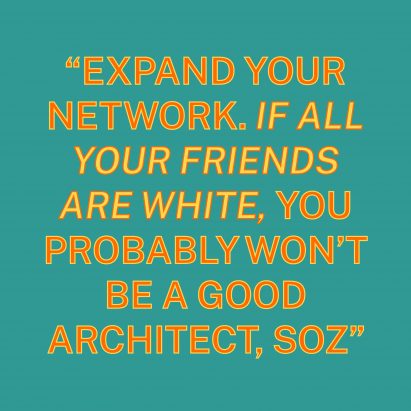
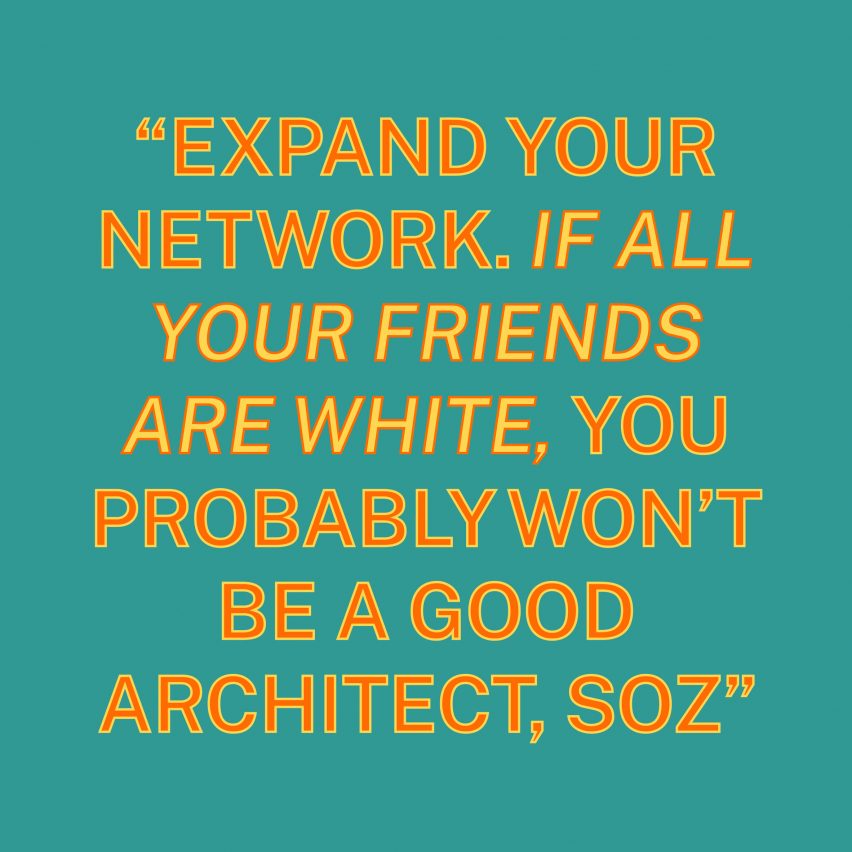
Improving racial diversity in the architecture industry will require uncomfortable conversations, say Sound Advice founders Joseph Henry and Pooja Agrawal.
Architecture diversity platform Sound Advice creates short quotes and tips on social media coupled with music, which are designed to be an alternative to the academic way in which inequality is usually discussed.
"We wanted to express something tonally different to a lot of the things we were reading about inequality," Agrawal and Henry told Dezeen.
"We found that discussions can be too theoretical and academic and we wanted to create a space where we could be more reactive and explore the visceral and human experience of inequality in the built environment."
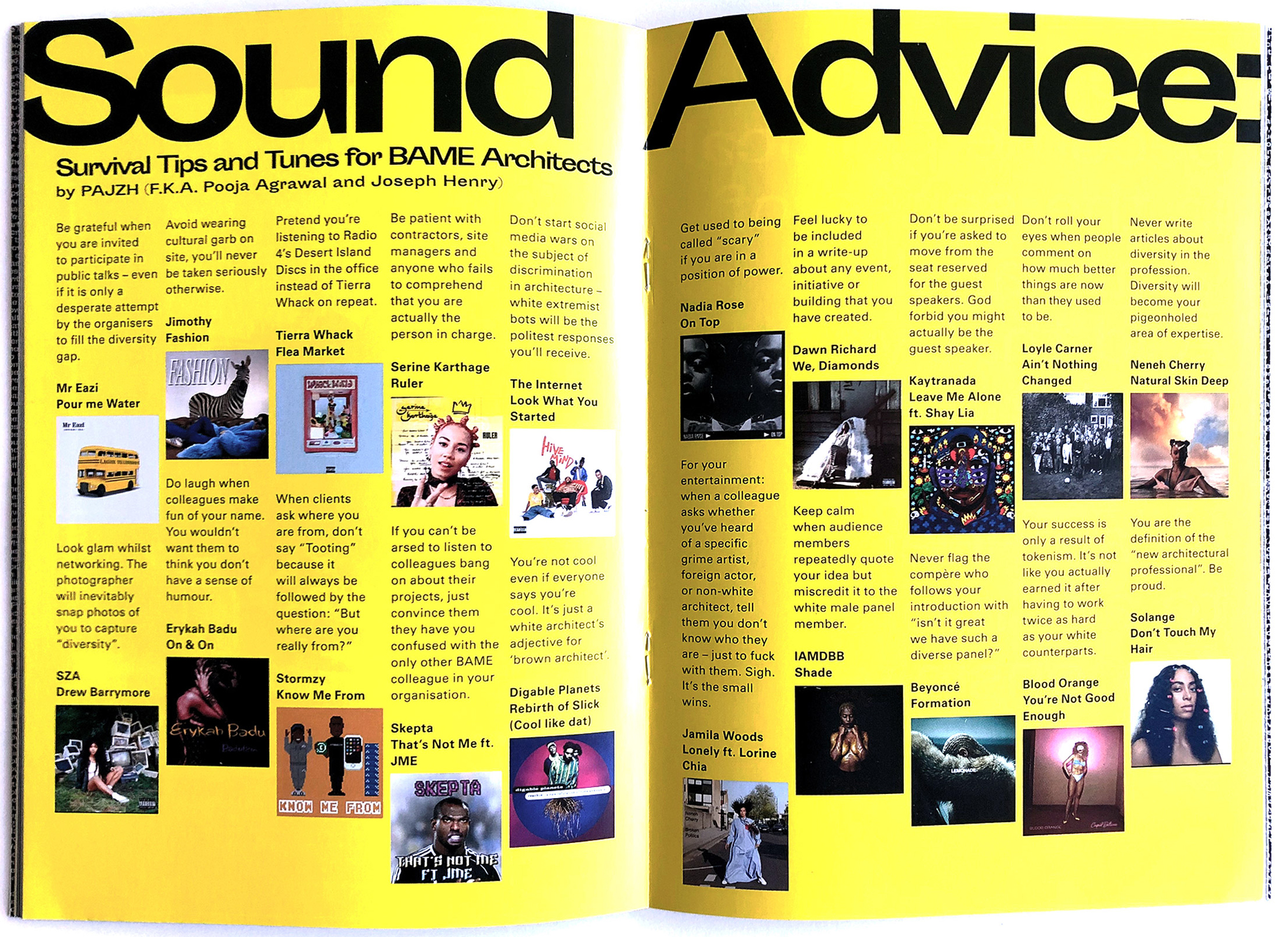
Agrawal, who is co-founder of not-for-profit organisation Public Practice and Henry, a senior project officer at the Greater London Authority, created Sound Advice after being featured in New Architecture Writer's magazine Afterparti.
"We don't want to be pigeon-holed as diversity experts"
As well as social media tips, Sound Advice now creates written articles, visual podcasts and events that focus on inequality in London, although its something its founders would prefer they didn't have to talk about.
"We don't really want to talk about diversity, we don't want to be pigeon-holed as diversity 'experts'," they said. "But we also came to realise that if we don't talk about equality, who will?"
"Sound Advice has become an alter-ego that allows us and other people of colour in the industry to say things that we would all feel worried about saying as individuals," they continued.
"Our tips make people feel quite uncomfortable"
Agrawal and Henry hope that their tips and other output will make people feel uncomfortable and challenge them to think carefully about the state of the industry.
"Our tips make people feel quite uncomfortable, but that is the point," they said.
"In getting people to emotionally respond to difficult issues, it opens the doors to having nuanced conversations in meaningful ways."
"Particularly as a lot of these people don't have black and brown friends and therefore this won't be a continual conversation that they are having in private. Our tips form a constant reminder of the dark truth of our profession and industry."
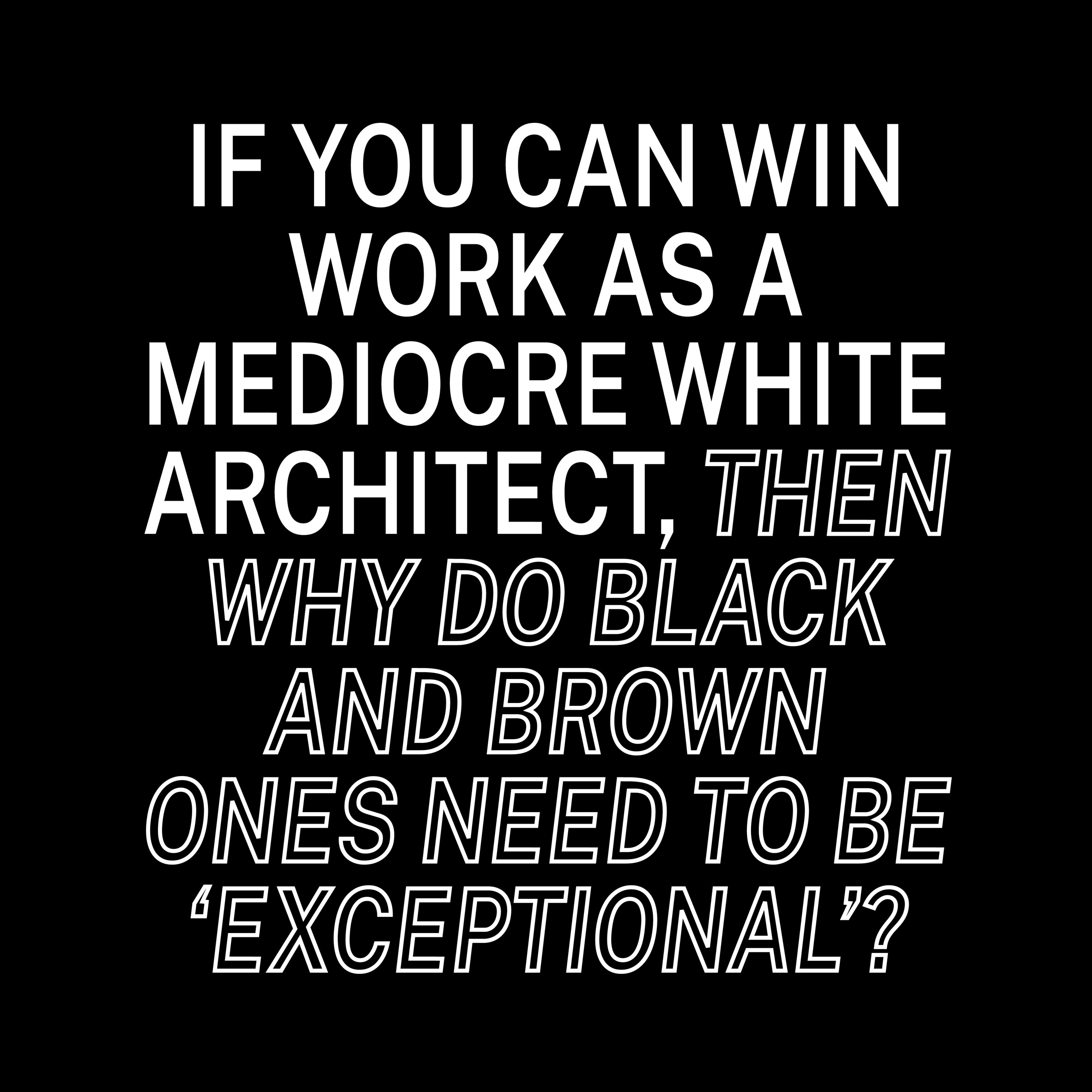
Dezeen spoke to Sound Advice in the wake of an increased focus on inequality in architecture and design following global protests after the killing of George Floyd in police custody.
Agrawal and Henry said that this has drawn attention to an issue that many have been talking about for a long time, and that this awareness now needs to be translated into action.
"The 'great white awakening' needs to move beyond an awakening to action," they said.
"Change who you talk to, who you listen to, who you follow on social media, what you read, what you watch, whose buildings you visit, who you collaborate with and who you design for."
"This is only a moment for white people"
One simple way that organisations can encourage diversity in architecture is by engaging and hiring more people of diverse backgrounds, they said.
"Hire, promote, commission, collaborate with more black and brown people," Agrawal and Henry said. "It is quite simple, be wary of people trying to make things more complicated than they are."
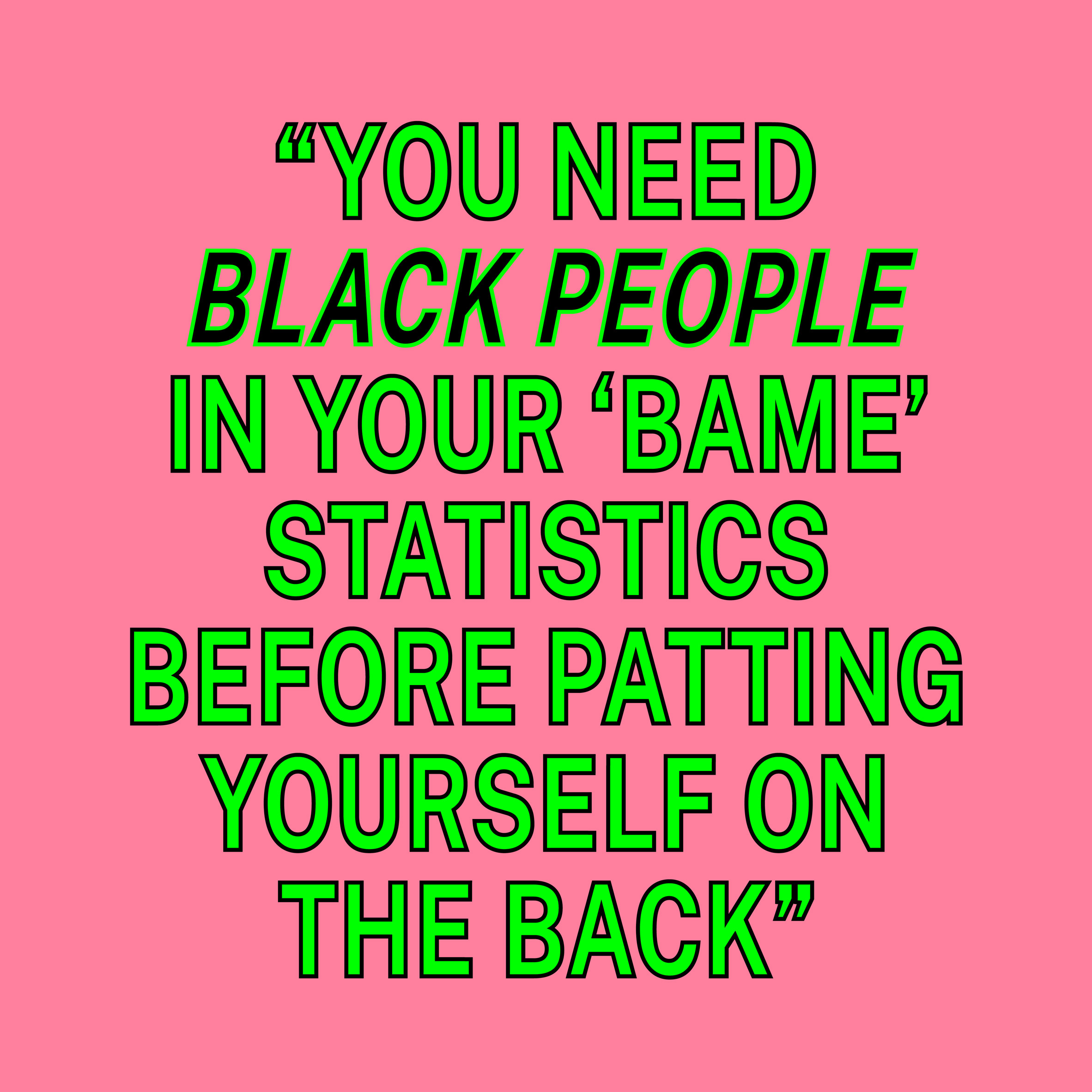
Sound Advice also challenged Dezeen to focus more on non-white architects and designers.
"We are aware that we are being interviewed by Dezeen because what we offer is of interest in this 'moment' – this is only a moment for white people, it is everyday life for PoC [people of colour]," Agrawal and Henry said.
"However, it would be interesting for Dezeen to question why it has excluded the voices of so many PoC until now?"
Agrawal and Henry concluded the interview with a piece of advice for Dezeen readers: "Open your goddamn door of opportunity", which they suggest should be paired with If I Ruled the World (Imagine That) by Nas featuring Lauryn Hill.
Tom Ravenscroft: Why did you establish Sound Advice?
Sound Advice: Establishing Sound Advice wasn't a conscious decision. It evolved from a commission for Afterparti, who wanted us to contribute something to their first publication.
We wanted to express something tonally different to a lot of the things we were reading about inequality. We found that discussions can be too theoretical and academic and we wanted to create a space where we could be more reactive and explore the visceral and human experience of inequality in the built environment. Hence, we produced a tongue-in-cheek survival guide for BAME (a problematic term but until our lexicon evolves we might have to use it as people know what it means) architects.
But since then, Sound Advice has evolved quite naturally. It has become a platform that takes multiple forms – written articles, visual podcasts and events, all with the ambition of discussing inequality in the city and in the sector.
Our tips make people feel quite uncomfortable, but that is the point. In getting people to emotionally respond to difficult issues, it opens the doors to having nuanced conversations in meaningful ways. At this particular time, it feels particularly important to hold the mirror in a provocative way and to offer advice to people who actually hold power within the industry. And, to reframe the debate from our perspective (black and brown commissioners), which is unfortunately still unique in the sector.
Tom Ravenscroft: Who do you think Sound Advice can reach that other organisations may not be able to? And how can sound be used to achieve this?
Sound Advice: Sound Advice has become an alter-ego that allows us and other people of colour in the industry to say things that we would all feel worried about saying as individuals.
There is a constant fear for people of colour of being labelled as "trouble-makers" which would ultimately have an impact on our careers, careers that are hard-fought for. Sound Advice provides the space for "truth" that reaches people in power, from directors of architecture practices to heads of cultural institutions, in a different way.
The format of quick bursts of soundbites on social media is also meant to intervene in people's Instagram feeds, amidst beautiful imagery of architectural "perfection". Particularly as a lot of these people don't have black and brown friends and therefore this won't be a continual conversation that they are having in private. Our tips form a constant reminder of the dark truth of our profession and industry.
We are also interested in using pop-culture and music as a tool to engage people in power with issues of inequality through their context, lyrics or music videos. We also enjoy the idea that songs and music can bring you back to a specific place or memory (first kiss, first dance) – so everyone who attended our Sound Advice talk for Architecture Foundation 100 Day Studio will forever associate Headie One's song Both with a discussion about structural inequalities in the design and retrofit of new homes.
Tom Ravenscroft: What do you think is missing from architecture discussions right now?
Sound Advice: In regard to inequalities in the city, we think the more pertinent question would be: "Who do you think is missing from architecture discussions right now?" The answer to that is quite obvious and it is important for people to work that answer out for themselves.
There are some issues about the language we use. We talk about inclusion a lot in regard to getting black and brown people rather than framing it as an exercise in addressing systemic and institutional exclusion. Inclusion is at the discretion of the powerful.
Rather than trying to include us within these problematic systems, it would be more important for the architecture sector to address why it excludes so many black and brown people from opportunities. Talking of exclusion rather than inclusion will lead to more worthwhile change.
We are aware that we are being interviewed by Dezeen because what we offer is of interest in this "moment" – this is only a moment for white people, it is everyday life for PoC. However, it would be interesting for Dezeen to question why it has excluded the voices of so many PoC until now?
To answer that question will require uncomfortable conversations, introspection and some new commitments. Otherwise, PoC will have to wait for another brutal murder and worldwide protests before we are deemed of value to have our voices included again.
Tom Ravenscroft: Why is humour important within this conversation?
Sound Advice: Are we funny? We just chat. Most of these one-liners have come from our WhatsApp conversations during tiresome experiences at meetings, events and public talks. Our chat became a private coping mechanism for the two of us, a form of therapy to survive.
But when we started sharing these publicly we found that the tone resonated with a lot of people of colour in the industry, it made them laugh and cry all at the same time.
Humour can be a tool that disarms people and can create an opportunity for more honest conversation. If you laugh or find something funny it means you have understood the truth of what it is saying. Historically, humour has been a tool for social change and is the most effective way of exposing hypocrisy. Consider us the Chris Rock and Meera Syal of the architecture profession.
Tom Ravenscroft: What practical things can organisations, universities, practices, publications and others do to encourage diversity in architecture?
Sound Advice: Hire, promote, commission, collaborate with more black and brown people. It is quite simple, be wary of people trying to make things more complicated than they are.
It is probably a distraction tactic from having to deal with difficult and uncomfortable conversations and decisions.
There isn't equity in the system and therefore giving more black and brown people power or means – in this case, fees – is the best and most effective way of dealing with this.
Tom Ravenscroft: How can the current focus on diversity be translated into actual change?
Sound Advice: We are architects by background and experts in design, housing and sustainability, but yet we find ourselves being the ones advocating for social equality in the city, and diversity in the sector.
We don't really want to talk about diversity, we don't want to be pigeon-holed as diversity "experts", but we also came to realise that if we don't talk about equality, who will?
But what we are saying hasn't changed, we have been saying the same stuff for ages. Sure, change needs to happen at a policy level, but it also has to change in everyday behaviour. It is easy to repost a black square on Instagram, but how many of you have actually looked back at your past and present and questioned how your privilege has given you the power you currently hold?
The "great white awakening'" needs to move beyond an awakening to action. Change who you talk to, who you listen to, who you follow on social media, what you read, what you watch, whose buildings you visit, who you collaborate with and who you design for.
Tom Ravenscroft: Do you think it will move beyond an awakening to action?
Sound Advice: That is a question for you. Not us. This is where your agency and power is important and where you could be agents for positive change. Dezeen should commit to showcasing and promoting the work of PoC practitioners regularly. It should commission a regular column from black and brown people. (You're an international and digital publication so it should be easy).
Some Sound Advice: Open your goddamn door of opportunity. Pair with the tune If I Ruled the World (Imagine That) by Nas featuring Lauryn Hill.
The post "Our tips make people feel quite uncomfortable" says architecture diversity platform Sound Advice appeared first on Dezeen.
